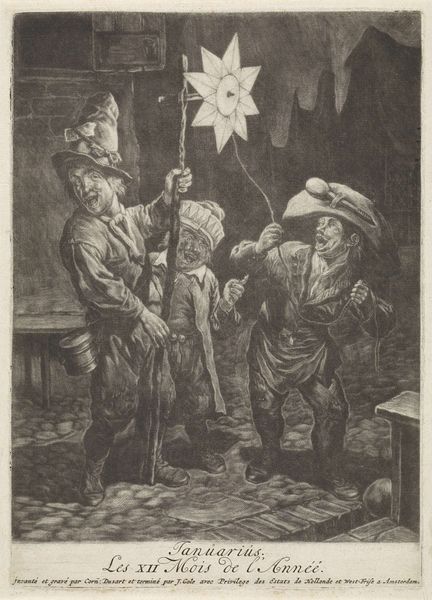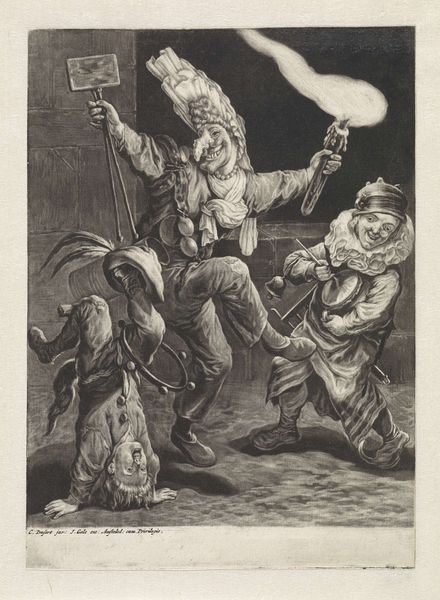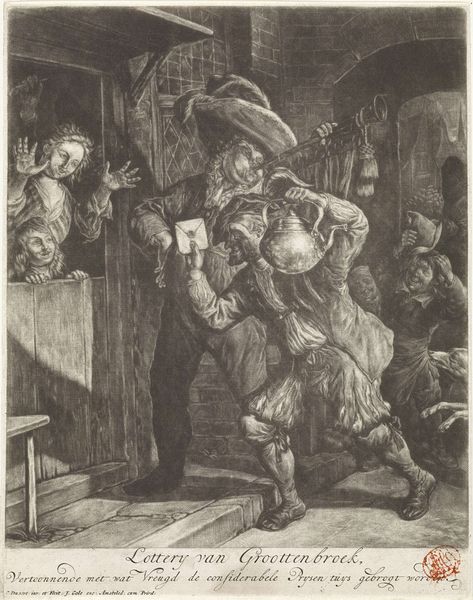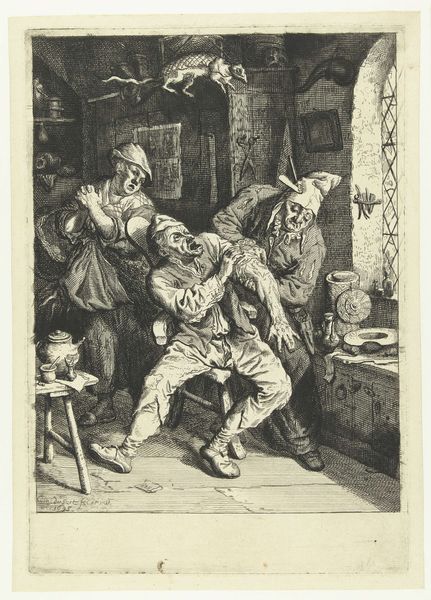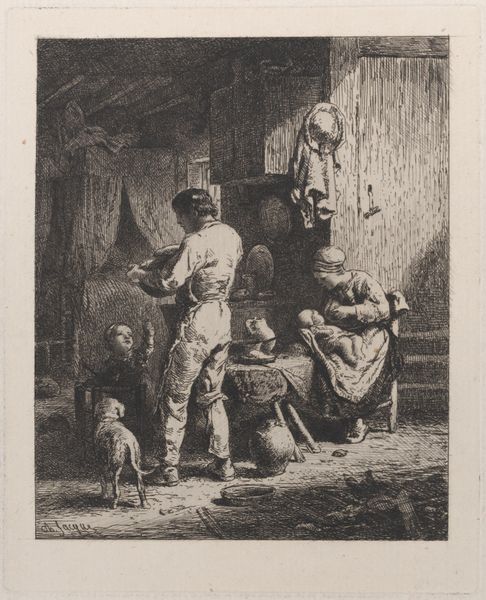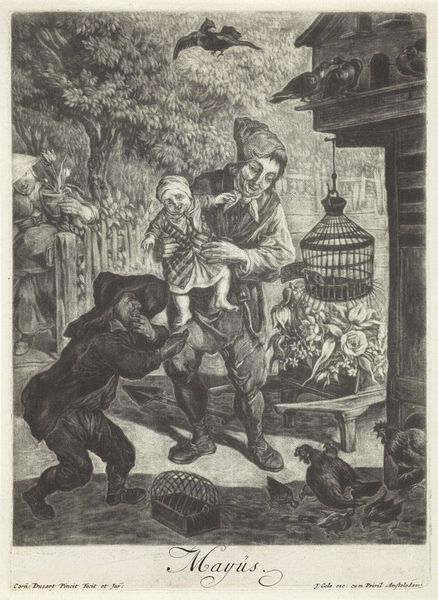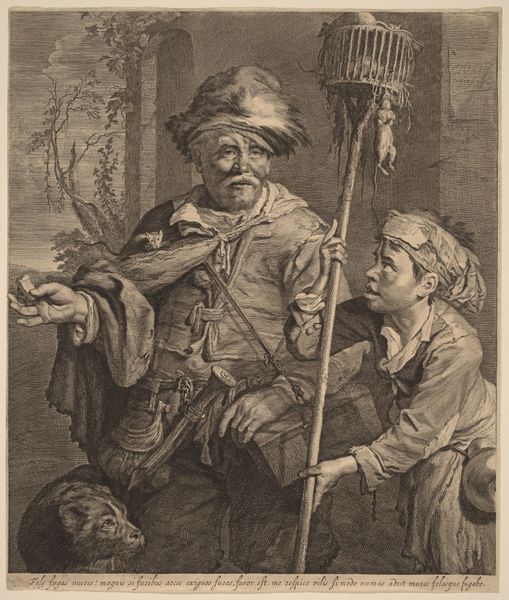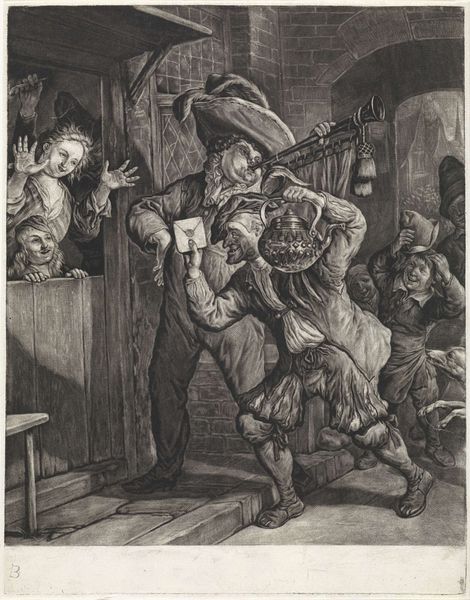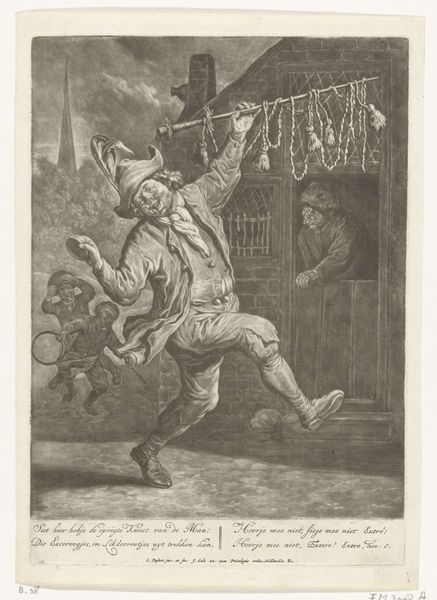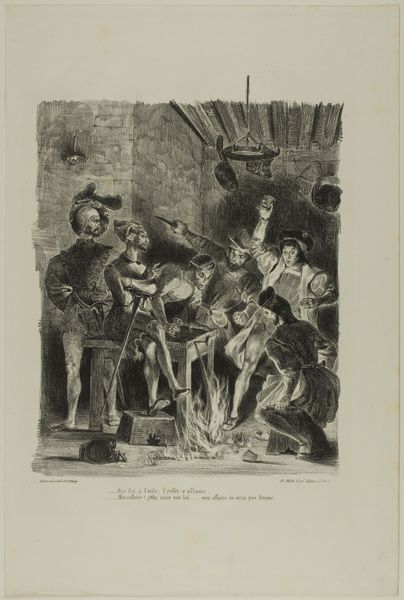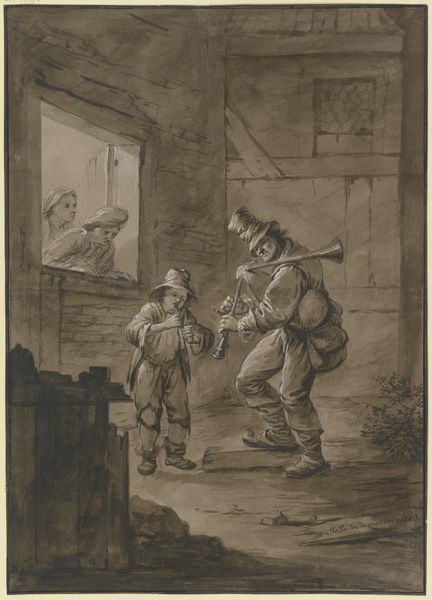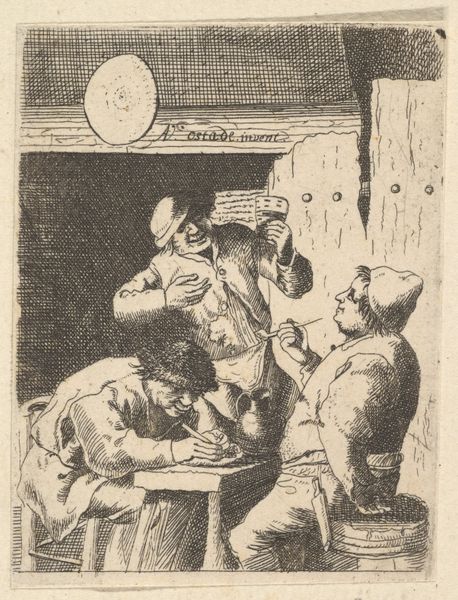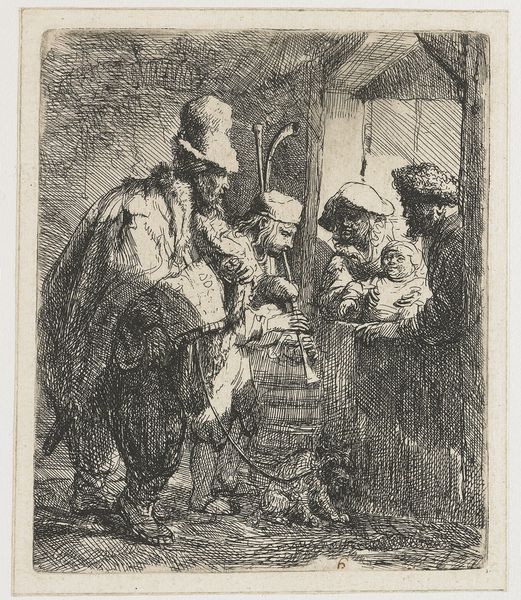
print, engraving
#
dutch-golden-age
# print
#
caricature
#
figuration
#
genre-painting
#
engraving
Dimensions: height 216 mm, width 154 mm
Copyright: Rijks Museum: Open Domain
Editor: Here we have Cornelis Dusart's engraving, "Januari," created sometime between 1679 and 1704. It looks like a raucous celebration captured in monochrome. There’s something captivating about the figures' expressions and the exaggerated details in the lines. What formal qualities stand out to you? Curator: Immediately striking is Dusart's deployment of line. Observe how its density varies dramatically to model form and evoke textures, from the rough cobblestones underfoot to the varied surfaces of clothing. Do you note the range of tonal values achieved purely through linear variation? Editor: Yes, the use of hatching and cross-hatching is quite impressive! The way he uses it to define the shapes and suggest depth is very effective. What else can we note about his choice of style? Curator: Consider the pronounced caricatural elements evident in the figuration. The artist heightens certain features—the wide mouths, the bulbous hats—drawing our eye to the graphic rhythm created by repeating these motifs. Further study reveals this creates a potent expressive quality within what we might consider a genre scene. Does it appear the work focuses on the character representation and their emotions above any environmental accuracy? Editor: That makes a lot of sense! I see the caricatures and exaggerated expressions, even in the clothing details now. It is more stylized than realistic. Thanks, that really makes me consider form and character in relation to each other. Curator: Precisely! Analyzing the relation of form and function can teach much. This piece elegantly exhibits the potent capacity of a singular line.
Comments
No comments
Be the first to comment and join the conversation on the ultimate creative platform.
